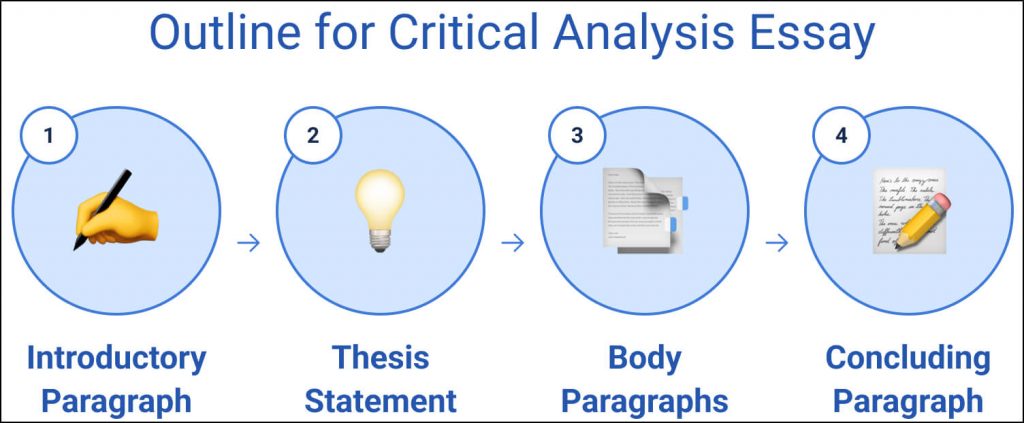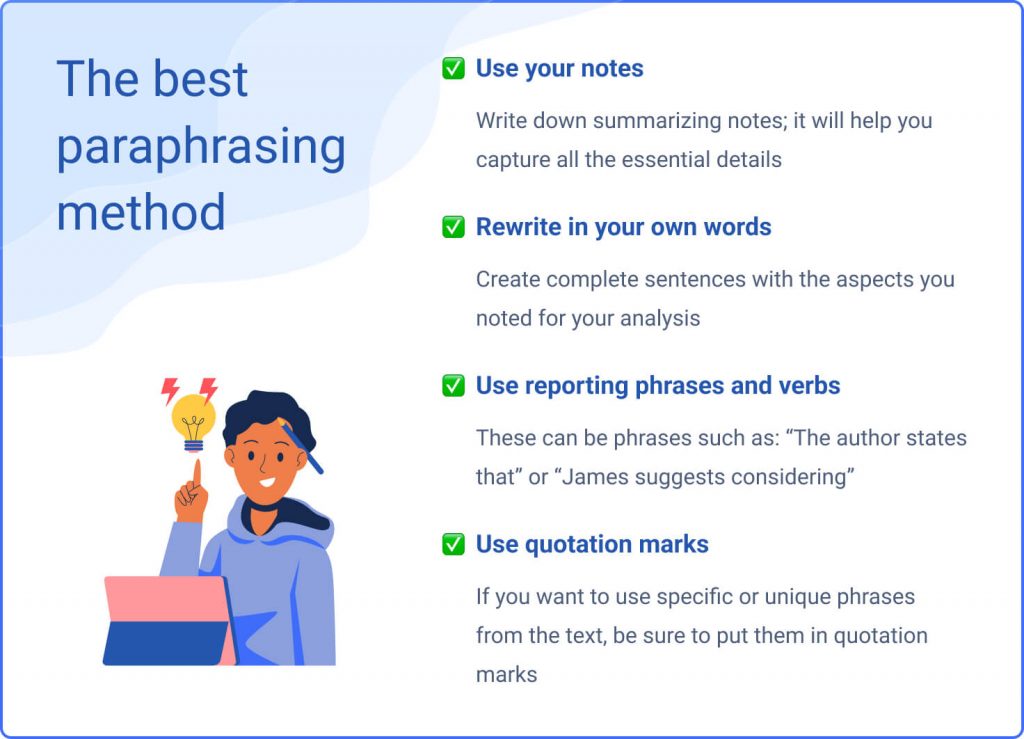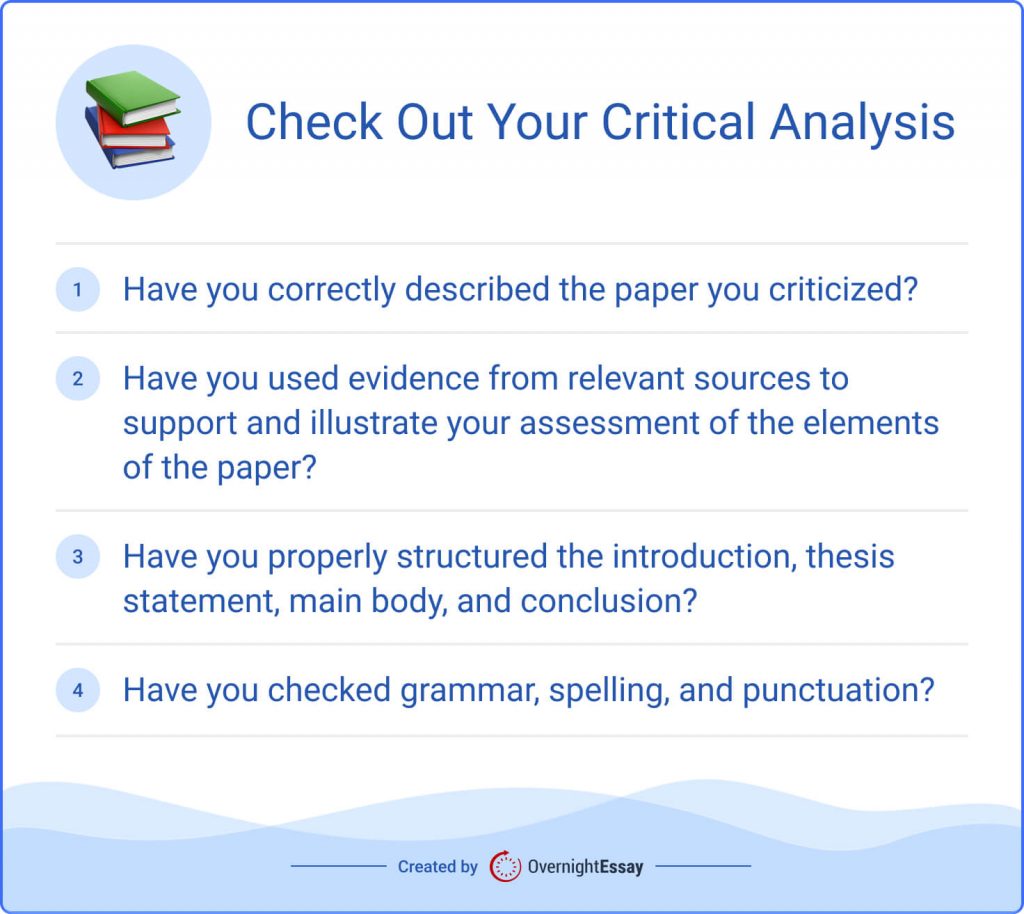
Critical analysis essays evaluate different subjects, including literature, political movements, advertisements, and theoretical concepts. They assess the strengths and weaknesses of the examined topics. Such papers provide solid arguments backed by evidence.
Our team has prepared an article detailing the structure of this academic writing type and the process of analysis and evaluation. You’ll learn critical essay writing skills and see some tips on handling this kind of assignment. If you’re interested, start reading our comprehensive guide.
🧐 What Is a Critical Analysis Essay?
Critical essays provide an in-depth look at a selected subject. A successful analysis requires expertise in critical thinking, reading, and writing. These techniques help evaluate the points an author tries to make. An essay like this examines the author’s arguments, thesis, and point of view via supporting evidence and logical reasoning. Unlike many other types of work, it focuses on the subject matter instead of personal opinions.
What Is the Difference Between Analysis and Summary?
Students sometimes can’t distinguish between the notions of summary and analysis. We decided to step in and show the differences in their meaning. This way, you’ll make fewer mistakes in the future.
What Type of Language Should be Used In A Critical Analysis Essay?
Because this type of paper is reserved for academic use, it utilizes formal language. Avoid first-person pronouns, slang, and contractions. It’s also best to never include phrases like “I think” or “in my opinion.” Readers already assume that the views presented in the paper are yours. So, the third-person voice is the one to go with.
📚 7 Popular Types of Critical Analysis Papers
You can encounter seven types of critical analysis in your studies. Each will come in handy, depending on their relevance to your assignments.
- Art analysis. This type interprets and examines installations, paintings, and sculptures. You can evaluate composition, technique, and color, including how they influence a work’s meaning.
- Cultural analysis. Students use this method when analyzing works of cultural significance, such as social media posts, ads, and pop music. It allows them to look at the context of the work and its influence in shaping cultural beliefs, norms, and values.
- Film analysis. With this type, it’s possible to interpret and analyze movies. It includes evaluating directing style, editing, cinematography, and sound.
- Historical analysis. This category is reserved for analyzing government records, letters, and diaries. Students use it to assess the context of documents and their influence on the cultural, social, and political scene.
- Literary analysis. You can use this essay type to evaluate literary works (poems, novels, plays, and others) or conduct a character analysis. It lets you look at literary devices such as metaphor, simile, and symbolism and their use in the work.
- Philosophical analysis. You utilize this analysis when examining philosophical ideas and texts. It frequently involves checking the cogency of the given arguments and conclusions. Also, such a type of analysis opens up an opportunity for self-reflection.
- Scientific analysis. You’ll find this type most helpful when evaluating the findings of scientific studies. Here, you consider the methods used in the research, the gathered data, and the conclusions scientists have come to while utilizing critical and logical thinking.
📝 How to Write a Critical Analysis Essay Outline
Creating an successful critique analysis paper requires three stages of preparation:
1️⃣ Examine the subject of your work.
2️⃣ Create an analysis outline with a brief rundown of your thoughts and ideas.
3️⃣ Write the academic paper!
Here, we cover what must be in each segment of your work. This way, you won’t forget anything and will get better results.

Critical Analysis Essay: Introduction
The introductory paragraph of your essay should be clear-cut and brief. It’s often divided into two parts that announce the topic and tell readers what the paper will be about. This way, they will know about the overall content of the work.
On average, the introduction should be no longer than 100-150 words. In rare instances, it can be expanded when discussing obscure topics. If you are unsure how to start, look at some introduction examples online. Additionally, your introductory part should contain:
- Context. Provide some background information about the topic so that even people unfamiliar with it can get some sense of your work. Mention its name, the author, and the cultural or historical context of the piece.
- Hook. Your work must begin with a hook sentence that catches the reader’s eye. Use surprising facts, quotes, or statistics to make them continue reading.
Critical Analysis Thesis Statement
After the introduction, work on a powerful thesis statement for your paper. In plain terms, it’s a claim you’ll prove in your work. Make it specific and leave no room for interpretation so that your readers understand what your work is about. If possible, have it encompass the main argument of your paper.
A good thesis statement has three qualities:
- It’s debatable. A strong thesis is not just a statement of fact but an argument that can be analyzed. It invites discussion rather than asserting something obvious or generally accepted.
- It’s brief. Polish the thesis statement until it fits a single sentence. Making it a bit longer is possible, given that you provide only the most essential information.
- It gives details. Another sign of a good thesis statement is the specific details it provides. Tell readers about the topic you’ll analyze in your essay. Ideally, the statement will appear in the first paragraph of your work.
Critical Analysis Essay: Body Paragraphs
The body is where you show your evaluation skills through facts and logic. You can divide this portion of the essay into facts and their analysis. You should answer five questions: why, what, when, where, and how. The level of detail you provide depends on the target audience. A well-written paper has the following elements:

- Analysis. Each paragraph must analyze the work in detail. Talk about its techniques, ideas, and main themes.
- Counterarguments. Your critical analysis paper should address potential counterarguments readers can come up with. They can be either refuted or simply acknowledged.
- Interpretation. Besides analysis, the body interprets the piece’s significance and meaning. Tell readers what the work tries to tell about human nature and society.
- Topic sentence. Begin all body paragraphs with a topic sentence. They should outline the central argument or point of the paragraph.
- Transitions. Include transitional words and phrases to create a flowing narrative and maintain the logical structure. This also helps demonstrate the relationship between ideas and arguments.
Critical Analysis Essay: Conclusion
Your paper must end with a solid conclusion that summarizes the introduction and body paragraphs. On average, the conclusion is two paragraphs long and provides the main ideas of your writing. It’s your final chance to leave a lasting impression on your audience. Readers should be able to understand the main idea of the entire essay by reading only the last paragraphs.
Good conclusions have the following elements:
- A summary of the main points. Repeat the main arguments and facts presented in the work to reinforce your thesis.
- Final thoughts on the matter. Wrap things up with final observations and ideas about the subject of your research. It can be a question or a call to action.
- Implications. Talk about the impact of your work and what it tells about the topic. This puts your analysis into context and makes it relevant.
- Previously stated information. Never include new facts and data in the final section of the paper. It should only cover what was previously analyzed.
- A reiteration of the thesis. A conclusion should start with a rephrased thesis statement. This way, you make readers remember it and provide a sense of closure.
🖊️ Critical Analysis Essay Example Template
Check out the following sample template for the most common format you can use to write and outline ideas for your upcoming critical analysis paper.
🤩 9 Tips for Creating an Engaging Critical Analysis Essay
Everybody has their own opinion when it comes to making an engaging essay. However, the following tips apply to many types of critical analysis papers.

- Stay objective. Don’t include personal biases or opinions in your writing. Remain objective and support your arguments with evidence.
- Make your writing formal. A critical essay paper uses a formal tone and academic language. That makes you more credible in the eyes of professors and readers.
- Don’t judge. While your work must be critical, it shouldn’t include unsavory statements or judgments about the subject or its author. Concentrate on its themes and techniques.
- Work with an outline. Before writing your paper, create a template with its main ideas. This way, you’ll improve the structure of the piece.
- Provide supporting evidence. A good paper contains evidence and facts supporting your arguments. These can be quotes or examples from the work.
- Stay clear and brief. The essay must have plain language that communicates its message. There’s no need to include complex terminology and technical jargon.
- Include different perspectives. A well-written paper considers an issue from multiple perspectives. Go into some detail about how the work can be interpreted.
- Use vivid language. Interesting phrases and sentences can help maintain the reader’s attention but ensure your writing reflects the complexity of your analysis.
- Proofread your essay. Pay attention to the logic of your narrative and grammatical errors. If you were in a hurry, there may be inaccuracies, and it’s worth correcting before submission.
What Not to Do in Critical Analysis?
There are several things that you should avoid:
- Never cite unreliable sources and present arguments that lack a factual basis.
- Don’t summarize the subject too much, as it’s not the purpose of critical analysis.
- Finally, never neglect the referencing rules and proofreading your paper.
Follow these tips, and your report will surely impress your professors.
💡 How to Select the Topic for a Critical Analysis Paper
Sometimes, you have too many good ideas for an essay. But several tips can make this process a lot easier:
- Write about something you’re passionate about. Find a topic that you’re genuinely interested in exploring. Choosing something random won’t work, and it will show in your writing. Look around for some ideas and title examples to select one that you’ll enjoy researching.
- Find your argument. Your paper can fall apart even if you have an exciting topic but can’t interpret it well. This can happen because the subject is too niche or broad to pin down.
- Research thoroughly. A paper is only as good as the research you conduct. Take some time and build your factual base to have enough content when writing your essay.
- Be unbiased. When you work, stay objective. If you’re writing about something you strongly oppose, you better steer clear of the topic. Otherwise, your paper will become too biased.
- Find the target audience. Lastly, it would help if you considered who the critical analysis paper is geared towards. You can make it all about impressing professors or making fellow students appreciate the subject of your work.
15 Best Topic Ideas for a Critical Analysis Essay
- Critical essay on global warming and its consequences
- A critical look at US foreign policy
- Pros and cons of the Second Amendment
- A critical evaluation of democracy
- The Godfather: A critical analysis
- Is The Great Gatsby the great American novel?
- Modern education: A critique
- Is The Adventures of Arsene Lupin an unconventional crime novel?
- Guns, Germs, and Steel by Jared Diamond
- The pitfalls of communism
- L. A. Confidential: A film analysis
- A critical look at the housing market
- Why Die Hard is the perfect Christmas movie
- A critical analysis of the two-party system
- Climate change: Made up or real?
👍 Good Critical Analysis Examples
Learning from examples is much better than having only theoretical knowledge. You can benefit from several essay examples prepared by our experts. They might give you a better understanding of how to write such assignments:
- Critical Analysis of Moonlight by Barry Jenkins. This paper talks about the movie Moonlight, which follows the life of a man named Chiron. The film depicts his struggle with masculinity, abuse, and sexuality.
- Mary Shelley’s Frankenstein Critical Analysis Essay. The essay deconstructs the themes of Frankenstein. Particularly its religious symbolism, depiction of god, and human nature.
- A Critical Analysis of the Participant-Oriented Approach to Evaluation. The paper gives a critical look at the way the educational process is conducted at Bard College. Its analysis heavily relies on the data collected from the participants of the Bachelor’s program in Art History and Visual Culture.
- Critical Analysis on Nissan with Rio Tinto and Vestas. In this essay, the author reviews and compares the companies Nissan, Rio Tinto, and Vestas. It focuses on how each of them conducts their business, emphasizing Nissan’s achievements.
We did our best to give you all the necessary information to make a tremendous critical analysis paper. Also, check out our article about art criticism essay and share this guide with friends who will find it helpful in their academic pursuits.